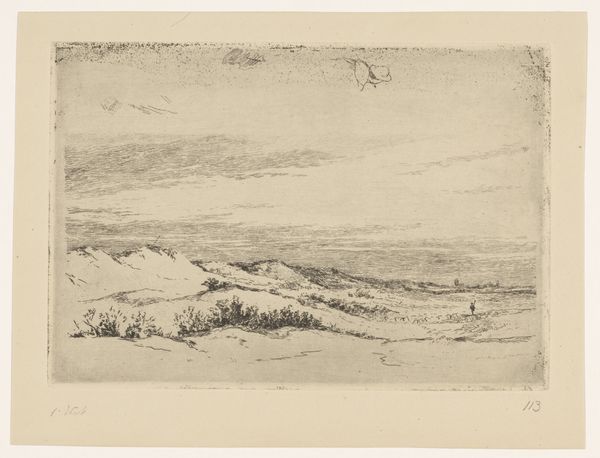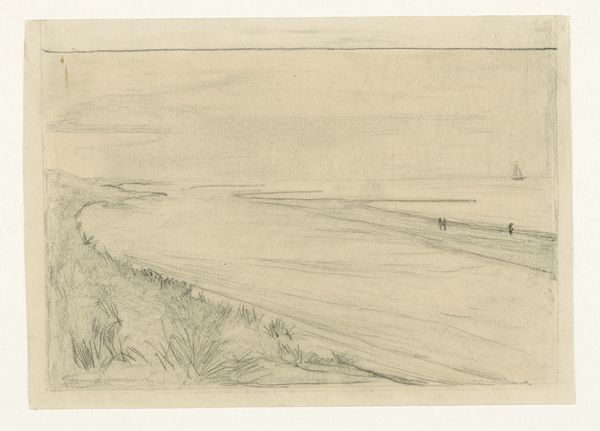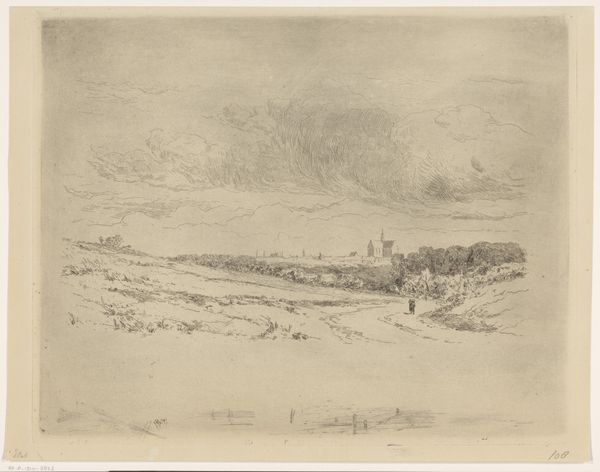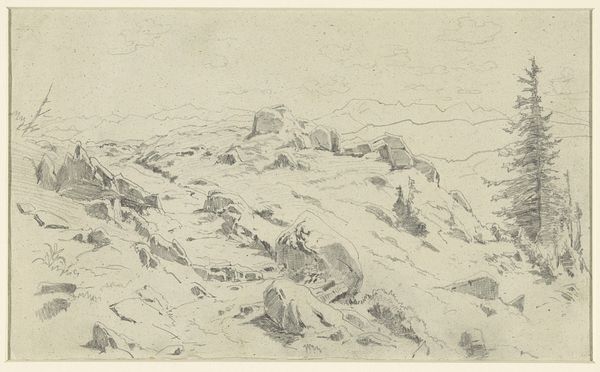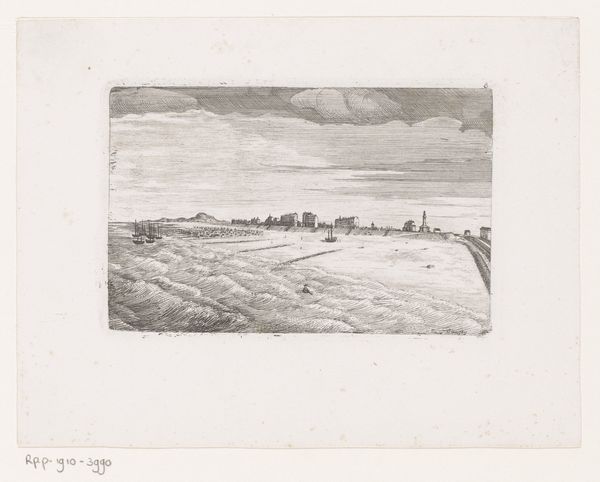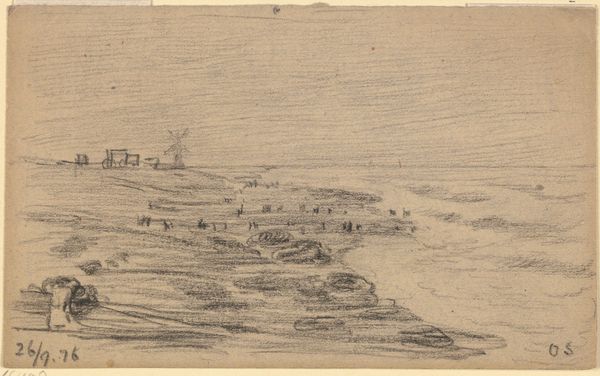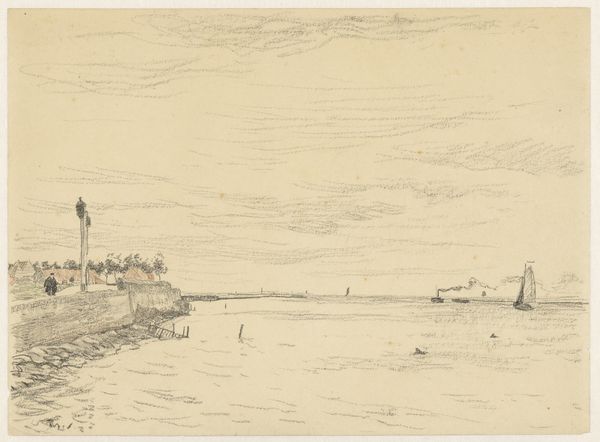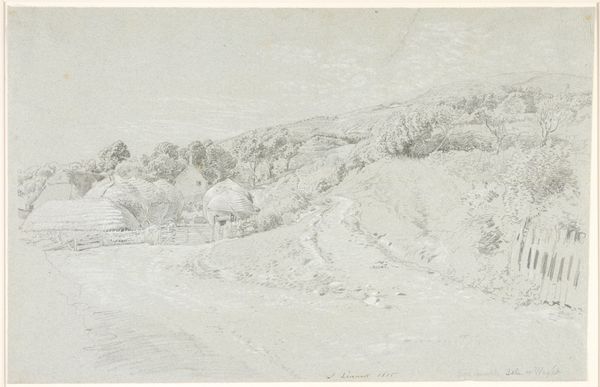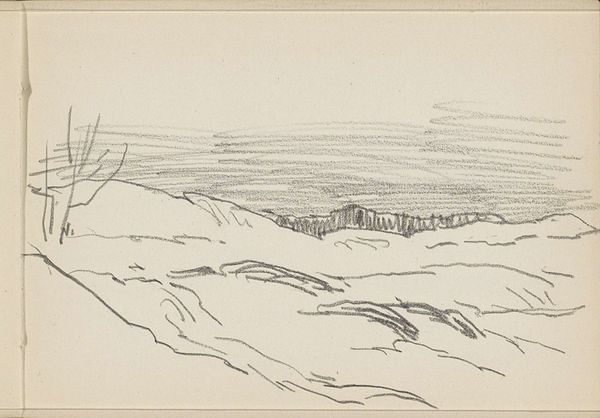
drawing, pencil
#
pencil drawn
#
drawing
#
pencil sketch
#
landscape
#
pencil drawing
#
pencil
#
realism
Dimensions: height 149 mm, width 309 mm
Copyright: Rijks Museum: Open Domain
Curator: Julie de Graag's 1914 pencil drawing, "Duinlandschap bij Groet," offers a deceptively simple view of the Dutch dunes. Editor: My first thought? Serenity. It's like looking at a whisper. The soft gradients, the spare lines – it breathes quietude. A kind of poignant stillness. Curator: The interesting thing about what looks simple is, more often than not, it's borne of deeply held politics. You know, a desire to reject ornamentation and to show the reality, without flourishes, for the people, not just the elite. Editor: I can see that in the almost brutal honesty of the lines. And that the focus is the landscape itself, raw and untamed in a way, before us. This idea that a land also can become an identity, as its own body, beyond being owned by settlers, landlords, colonizers – because there were constant tensions around this landscape, of people against water, people against wind. A place of in-between-ness. Curator: It speaks to De Graag's position as a woman artist working in the early 20th century, negotiating her place in a male-dominated art world while also responding to the changing social and political landscape of the Netherlands. She did not conform, in the way many men did, of art about war, perhaps – but made a drawing of quiet and hope. The subtle texture created by the pencil strokes makes the scene feel tangible. It's very tactile and evokes a real sense of place. You can almost feel the wind. Editor: But there's more than quiet there, there is a melancholy too. Look at the marks where the sand rises – the lone bushes in her representation feel fragile. Curator: I do find it remarkable, the effect she creates with just pencil on paper, transforming them into the dunes. There’s the way it almost seems to glow with that light she brings to it. Editor: Exactly. She captures the fragile, liminal state that landscapes can often embody, with all the subtle violence imbued there through natural and colonial erasure. Curator: I guess that fragility is precisely what stays with me now, because when I see this drawing, I'm seeing both strength and gentleness intertwined. I think I will see more when I return here later!
Comments
No comments
Be the first to comment and join the conversation on the ultimate creative platform.
